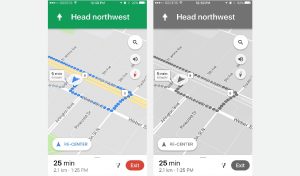 I worked three part time jobs while I was in graduate school; one was in my (at the time) chosen career field, building industry experience; one was officiating women’s lacrosse, a game and community that I was very heavily involved in throughout high school and college; and the third was as a sales associate in a retail chain store. There’s an adage that everyone should have to have a job in food service or in retail at least once in their life in order to learn how to be a better customer/human being; I would further say that everyone who works in HR or HCM should at one point serve a retail stint, if only to experience one of the worst aspects of retail life, and a failure of both HR process and technology: the clopen shift.
I worked three part time jobs while I was in graduate school; one was in my (at the time) chosen career field, building industry experience; one was officiating women’s lacrosse, a game and community that I was very heavily involved in throughout high school and college; and the third was as a sales associate in a retail chain store. There’s an adage that everyone should have to have a job in food service or in retail at least once in their life in order to learn how to be a better customer/human being; I would further say that everyone who works in HR or HCM should at one point serve a retail stint, if only to experience one of the worst aspects of retail life, and a failure of both HR process and technology: the clopen shift.
The clopen, which can also be made into the verb “clopening,” is when a retail or other hourly-based worker is assigned the closing shift and the opening shift on the next consecutive day. It’s a grueling slog, depriving workers of valuable sleep, family time, and life outside of work. Clopening shifts contribute to employee stress and burnout, which in turn decreases employee engagement and threatens retention.
So who’s to blame for the continued existence of the clopening shift? Turns out that legacy automated workforce management tools play a large role in facilitating these types of shifts. These legacy tools are based upon a mathematical formula for placing employees in the right place at the right time, but do not take into account work-life balance or other outside factors. In fact, this technology’s main purpose is to optimize workforce deployment through a balance of adequate coverage and labor costs. There is no human element to it.
How do you solve this workforce management problem? Use the right tools for the job! Combine human expertise with modern technology, and enforce practical and ethical scheduling practices. Set rules that employees must have a rest period before being scheduled for certain shifts. Release schedules in advance, and review them to make sure that everything is complaint. Best of all, empower employees by giving them the ability to set their own availability – like my retailer did. This self-service will help keep them engaged – and well rested. The clopening shifts benefits no one, but responsible workforce scheduling will make for better rested and more productive employees.
How else can self-service tools help workers as well as their organization? Find out here!
(281)
Report Post







